BUENOS AIRES IS SO ECLECTIC that everything resembles something else… but not quite. One is constantly reminded of other world capitals when walking around, but at the same time feels its unique vibe from the start. Here is a quick guide to one of the largest metropolis in Latin America and how to move around its key neighborhoods.
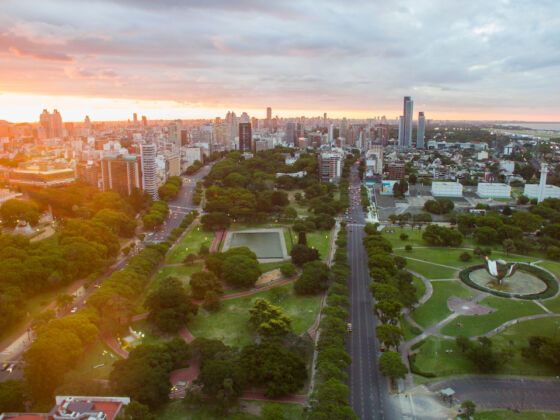
A Quick Guide to the Neighborhoods of Buenos Aires

Photo: T photography/Shutterstock
Palermo is the largest “barrio” -with 16 square kilometers- and it’s subdivided into smaller areas. Palermo Chico (also referred to as Barrio Parque) is an exclusive residential neighborhood with tree-lined streets, mansions and embassies -close to Avenida Libertador and MALBA museum-. It’s where the Buenos Aires elite lives, including president Mauricio Macri, Argentine TV presenters Marcelo Tinelli and Susana Jimenez. In contrast, Palermo Viejo once had many “casas chorizos”, old two-story constructions, shaped like sausages, where lower income families of immigrants used to live. Unfortunately many of these houses have been demolished in the last few years to make way for ugly concrete high-rise apartment blocks.
Palermo Soho receives its name and style from NY SOHO, a district that has become synonymous with trendy boutiques and clothing stores, coffee bars, bakeries, U.S. style diners and ice cream parlours. Around the cafés of Plaza Armenia and Plaza Serrano, crafts fairs are held on Sundays. Palermo Hollywood is where the night owls and young crowd hang out. As well as its numerous bars you’ll find dozens of nightclubs close to Avenida Juan B. Justo and along Niceto Vega street. The area is also home several advertising agencies, television production companies and also radio and TV stations like America and Canal 5. There are plenty of restaurants offering different cuisine in this area. The combination of Soho and Hollywood (on either side of Juan B. Justo) make a great area for a night out, because many bars and nightclubs concentrate here. You may even find peñas with folk music or a few jazz spots if you know where to look.
Finally, Bosques de Palermo is the largest green area of Buenos Aires with its lakes and is a popular place to hang out at weekends and evenings. You can ride a boat (kind of old and shaky), or use the walking, cycling and roller-blading paths. After dark, close to Palermo Golf Club, prostitutes (nearly all of them are transvestites) can be seen looking for business along the path that goes round the boating lake.
Palermo in general is a good place to see street art – a number of local stores in Palermo Soho have their shutters painted with colorful designs and there are some large-scale murals as well. Not so fabulous hipsters (locally called ‘hippies with OSDE’) and is where most expats from Europe, North America and Canada live and go out. Thanks to recent migration waves and the more welcoming palate of locals, culinary options are now wider. You can find decent , Mexican, Peruvian, Brazilian or Armenian food and there are one or two Indian and Thai restaurants while there are no shortage of sushi restaurants and new pubs serving artisan beer. There is still a lot of room for improvement in quality of service, cleanliness and legitimacy of the menus (some options are a big chamuyo). In the last few years more organic and vegetarian restaurants have popped up in Palermo but in traditional Argentine restaurants – other than salads – don’t expect to find too many vegetables on the menu. Remember you can always go with empanadas de humita (corn) to avoid eating meat. Other traditional dishes are “guiso de lentejas” an Argentine stew with lentils or “locro” stew with corn and white beans (both normally have meat).
Villa Crespo -marketed by real estate agents as “Palermo Queens”-has become an extension of Palermo on the other side of Avenida Cordoba. It’s well known for its streets with clothing outlets and shoe shops with well-known brands. House prices are rising but rent is still is cheaper than neighboring Palermo and it’s less touristy. Villa Crespo also is well known for its “closed-door” restaurants (puertas cerradas) and with a large Jewish community, you can also find some delis and eateries with Kosher as well as Arabic food. Go there knowing you’ll be part of the wave of porteños and expats looking for the new place to be.
Puerto Madero

Photo: SC Image/Shutterstock
One of the few places where Buenos Aires actually takes advantage of the river and of its skyline. In the rest of the city, it’s not common to find enjoyable panoramic views. Many urban planners say “Buenos Aires le da la espalda al río”, as if Buenos Aires had an actual head and decided not to see the water on its back.
Anyway, going back to Puerto Madero: in the 1990s, old industrial docks were turned into high-end apartments and offices, and a couple of towers were built, so it all looks like “new money” compared to the rest of Buenos Aires. Despite being one of the most expensive places to live in BA, there are free or cheap alternatives for enjoyment. Walk around Puerto Madero (by the docks) at night or around the Reserva Ecológica during the day. The Reserve recreates what native flora and fauna used to look like, and sometimes you’ll feel the need for silence while in Buenos Aires, so this is good place. For meals, eat a choripan or a bondiola (pork tenderloin) from street vendors next to the Natural Reserve.
If you want to see what new money looks like, check out the Faena hotel with its Rojo Tango show, and the Faena Arts Center (yes, Alan Faena likes his own name). Several restaurants in the area are expensive (from traditional skate houses, to sushi and ceviche places), but you can make the most out of their “menú ejecutivo”, their lunch menu option from Monday to Friday.
San Telmo and La Boca
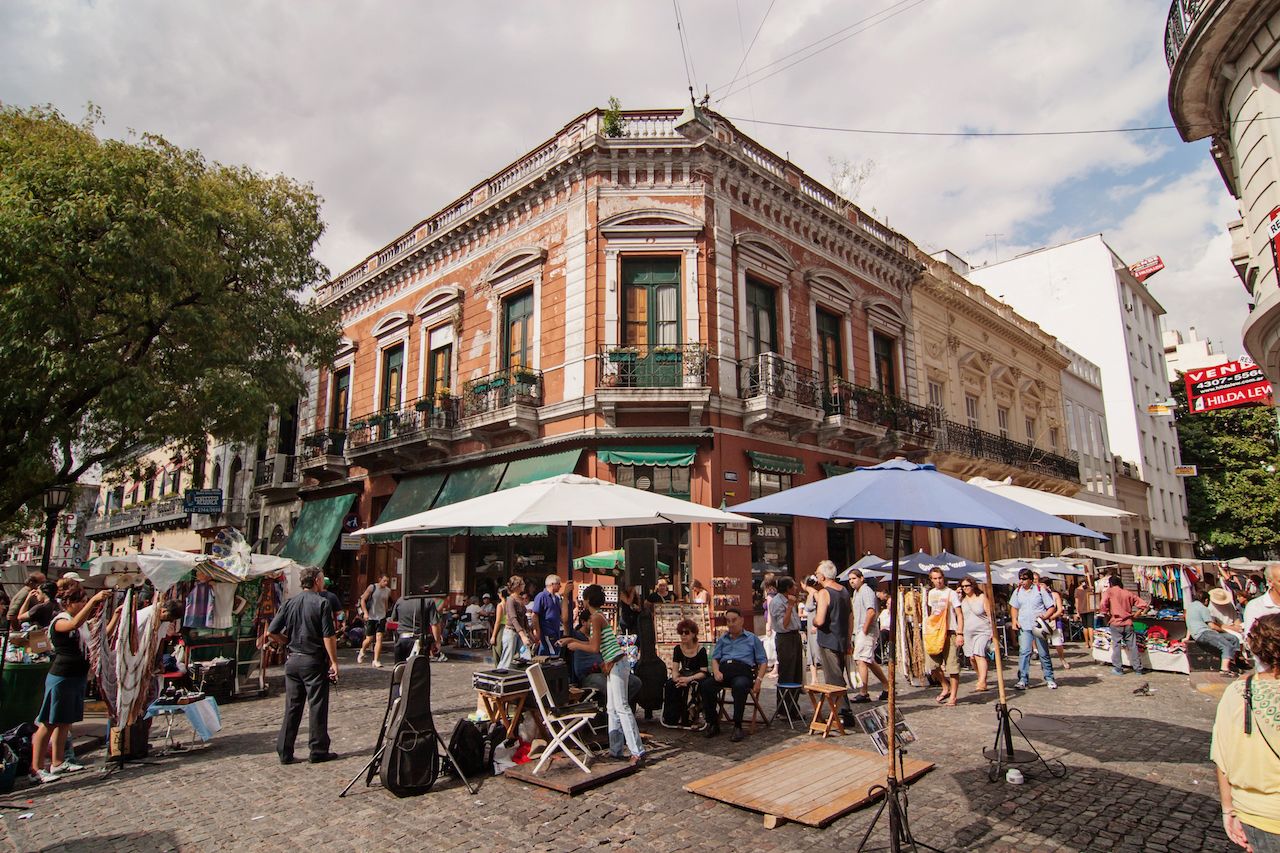
Photo: Gary Yim/Shutterstock
Just as New Orleans was one of the birthplaces of Jazz, San Telmo is “la cuna del tango”. The two areas have similarities in terms of architecture and the influence of European (mainly French, Italian and Spanish) and “African” communities. Though the black roots of tango has been denied for long, that’s no longer the case. Now, San Telmo has more than tango performances to offer: it has former “conventillos” (tenement houses), antique markets, small museums, cafés (“notables” or new ones), bars to cater all moods and restaurants. It also has a reputation for being one of the places where foreigners get robbed the most. So be careful, and follow this accurate day plan from my colleague Cathy Brown:
Pick up an antique asado knife at the daily indoor flea market, get your hippie on at the Sunday outdoor market in the cobblestone plaza, wash down two choripanes slathered in homemade chimichurri with enough cheap Malbec to convince yourself you can’t get food poisoning at the local hole in the wall Lo de Freddy. Then hit the fancier end of the food spectrum at night with a full-on asado at La Brigada. Hugo, the charismatic owner who gives off a slightly mafioso vibe, will decide whether he likes your attitude well enough to let you in. Don’t come off as a pretentious, entitled brat and you’ll be just fine.
San Telmo is relatively close to Caminito, that place in La Boca with the colorful houses that appears on every postcard from Buenos Aires. Most tourists go there, while most locals don’t (and they regret it when they actually see Caminito is pretty charming). There are three museums worth a visit: the Fundación Proa, the Benito Quinquela Martín Museum (pretty much thanks to his paintings, Caminito was preserved) and “Museo de la Pasión Boquense” -a museum that celebrates Boca Fans’ passion-. If you do the tour of La Boca stadium, make sure they tell you how they scare off opponents and why the Coca Cola logo was changed here.
Barrio Norte and Recoleta
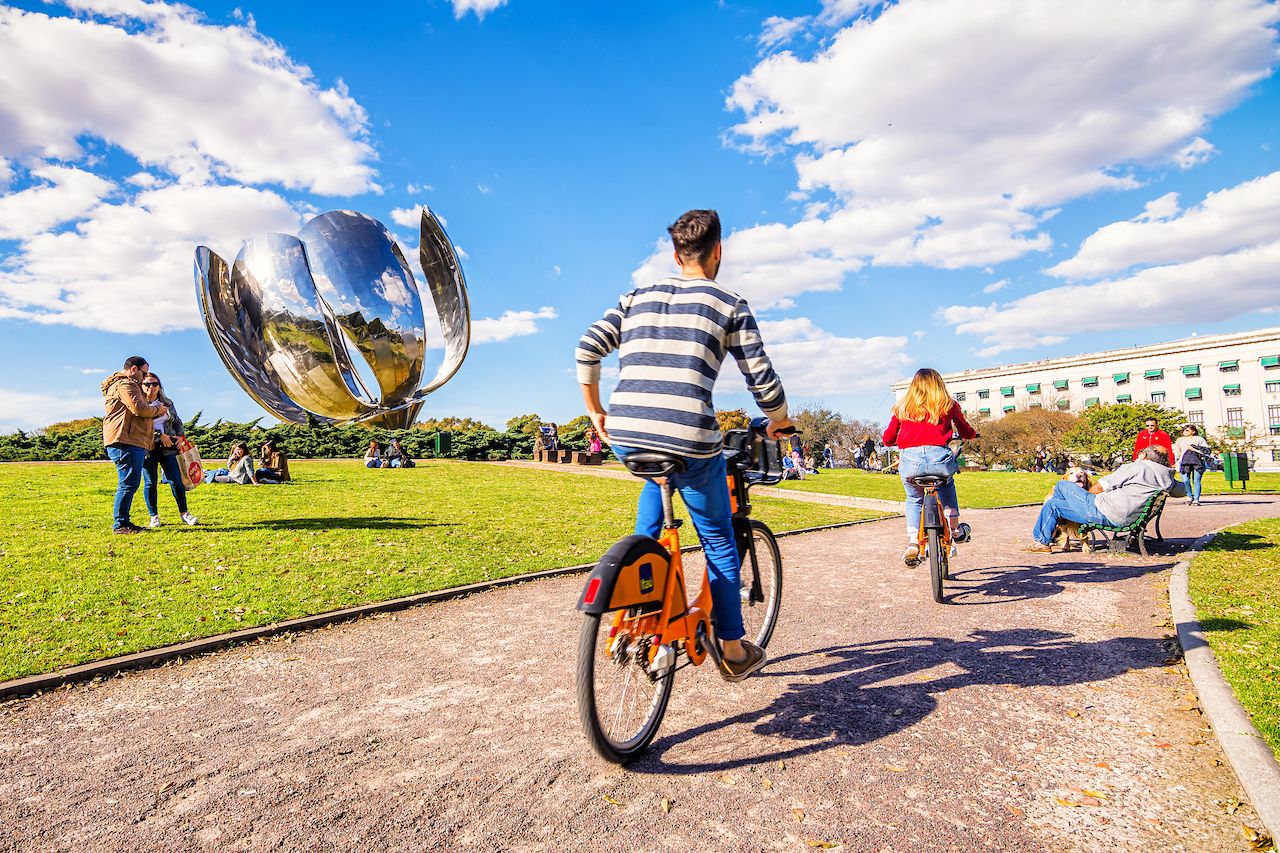
Photo: Antonio Salaverry/Shutterstock
Probably the areas most similar to Paris, and where several embassies are located. The institution you have to pay attention to here is alive and kicking: la gente-bien of Recoleta, some of them pretty conservative people from families best described as “old money”. The area is busy during office hours, and quieter at night time. If you are fond of tea houses, you can find English bakery all year long. If it’s one of the best bookstores in the world what you want to see, go to Ateneo Grand Splendid: take your time in the old theater with a drink and a book of your choice.
The craft market at Plaza Francia during the weekends is my favorite. I took several groups of tourists to the Recoleta Cemetery and they quickly recovered from asking themselves “why on Earth am I at a cemetery” to start asking better questions, such as “What happened here? Was this country rich in the past? Who are all these military men and priests?”. Deep questioning is usually alleviated with a relaxed lunch under the sun, gelato and street performances. Plus art lovers can forget about the BA chaos in the Fine Arts Museum or in one of the Modern Art Museums located close by. The night finishes off either at Milion or the ultra hip’ Florería Atlántico.
Caballito
Not touristy at all. You’ll see a quite neighborhood (except for when families pick up or drop off kids at school), where some good old cafes managed to survive next to new cuisines and the Starbucks of the world. You will also find young people in the area, expats and locals, partly because of “Filo” (or “Puan”), one of the University of Buenos Aires buildings. In the words of Elkita, my Aussie friend who studies there: The “Facultad de Filosofia y Letras” is truly one of the most wonderful, most ramshackle, most raucous places on god’s green earth. A place you can get a world-class education in a crumbling labyrinth. Where you can pick up great vegan sandwiches and enough political flyers to paper mache a house. Also the only class I’ve ever been in where firstly, there were two hundred students (many sitting on the ground) and secondly, the teacher, who was giving an awesome lecture about how much better Adorno was than Sarte, interrupted herself to light a cigarette. Two former students love Filo so much they made sure to place a subway station named “Puan” when extending the A line.
Belgrano
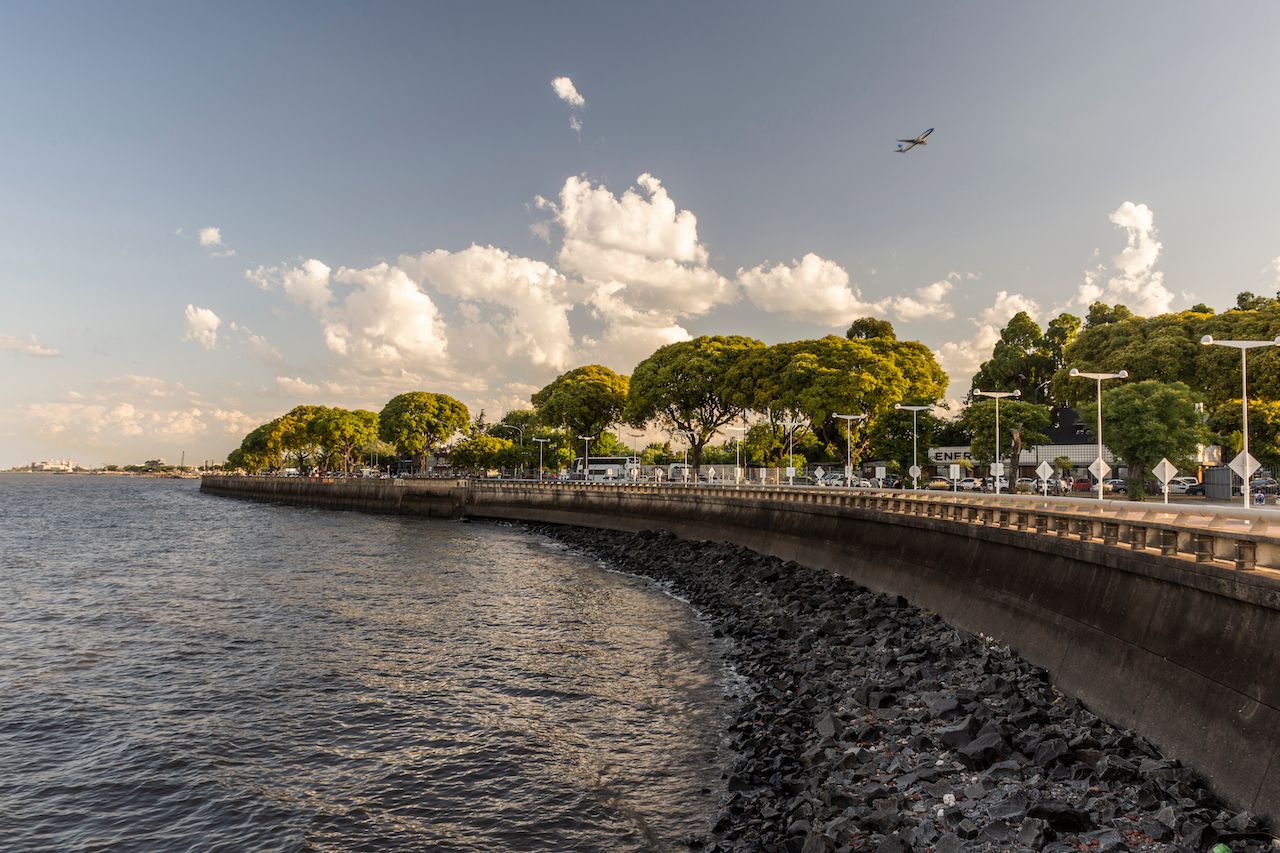
Photo: vitormarigo/Shutterstock
Another quiet neighborhood, and probably cleaner than Caballito. It’s worth the visit if you crave for Asian flavours, since BA Chinatown is here. Belgrano is also a good place to forget you are a tourist, people watch and relax on a café. Do walk around and appreciate how green the city can be.
The area between Plaza de los dos Congresos and Plaza de Mayo
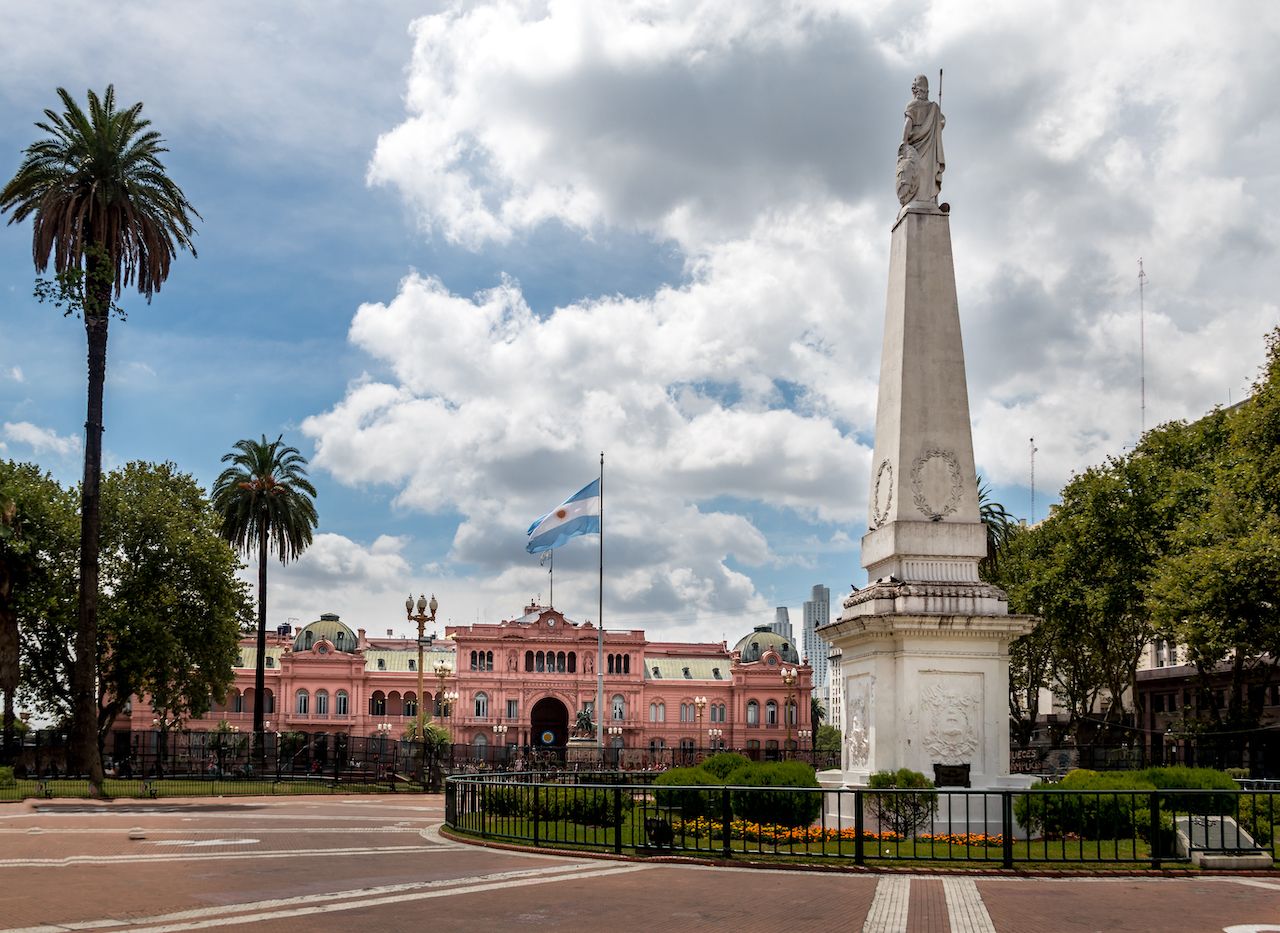
Photo: Diego Grandi/Shutterstock
It’s actually more than one neighborhood, but you can see them it all in a day. Most guides will say “go to Casa Rosada and the Congress, and have chocolate con churros at Café Tortoni”, which is not bad, but not my personal favorite. I’d say take a quick selfie at the Pink House and please avoid comments linking gender to the color: it’s not pink because of our famous female politicians. Then, spend some time in Palacio Barolo. The place was inspired in the Divine Comedy, so each floor has symbolic references to it, and you get a fantastic view of Buenos Aires from the top floor.
Moving around the city
If you are not a local, the subway is your best friend. Colectivos are way too complicated: forget about figuring out their logic. It’s not a grid of public transport, it’s a spaghetti plate. If your Google Map includes them in your trip planning, don’t improvise: just follow Google as if it were God’s word.
Don’t you ever dare mention Uber to Taxi drivers, unless you enjoy pissing off people. And the train is mostly used to go to the suburbs: I don’t know many porteños willing to go to the second and third ring of Gran Buenos Aires. On a first visit to Buenos Aires, most people only leave the capital city to go to Tigre, the delta area known for restaurants, a craft market and water sports.
Porteños are late adopters of bicycles if you compare them to counterparts in other capitals of the world. Some of them will even tell a foreigner that they are “locos” if they think they can navigate the aggressive traffic of BA on a bike. Nowadays there are bikes paths and the City Government created a public bike system called “EcoBici” (a super creative name). The advice is: choose quiet streets, and don’t assume car drivers will give you any kind of priority or that pedestrians will mind the timing for crossing the street.
Last advice: do walk. Avoid whatever looks shady at night, and choose avenues or main streets. Train yourself to check the floor regularly, as if it were a mindful meditation exercise to keep alert to the present time: sideways might be dirty or broken. Buenos Aires is simply gorgeous to walk around when it’s empty, so January can actually be great time to visit if you can live with “40 grados a la sombra” (an expression that describes the combined humidity and head of 40C / 104F even in the shade).